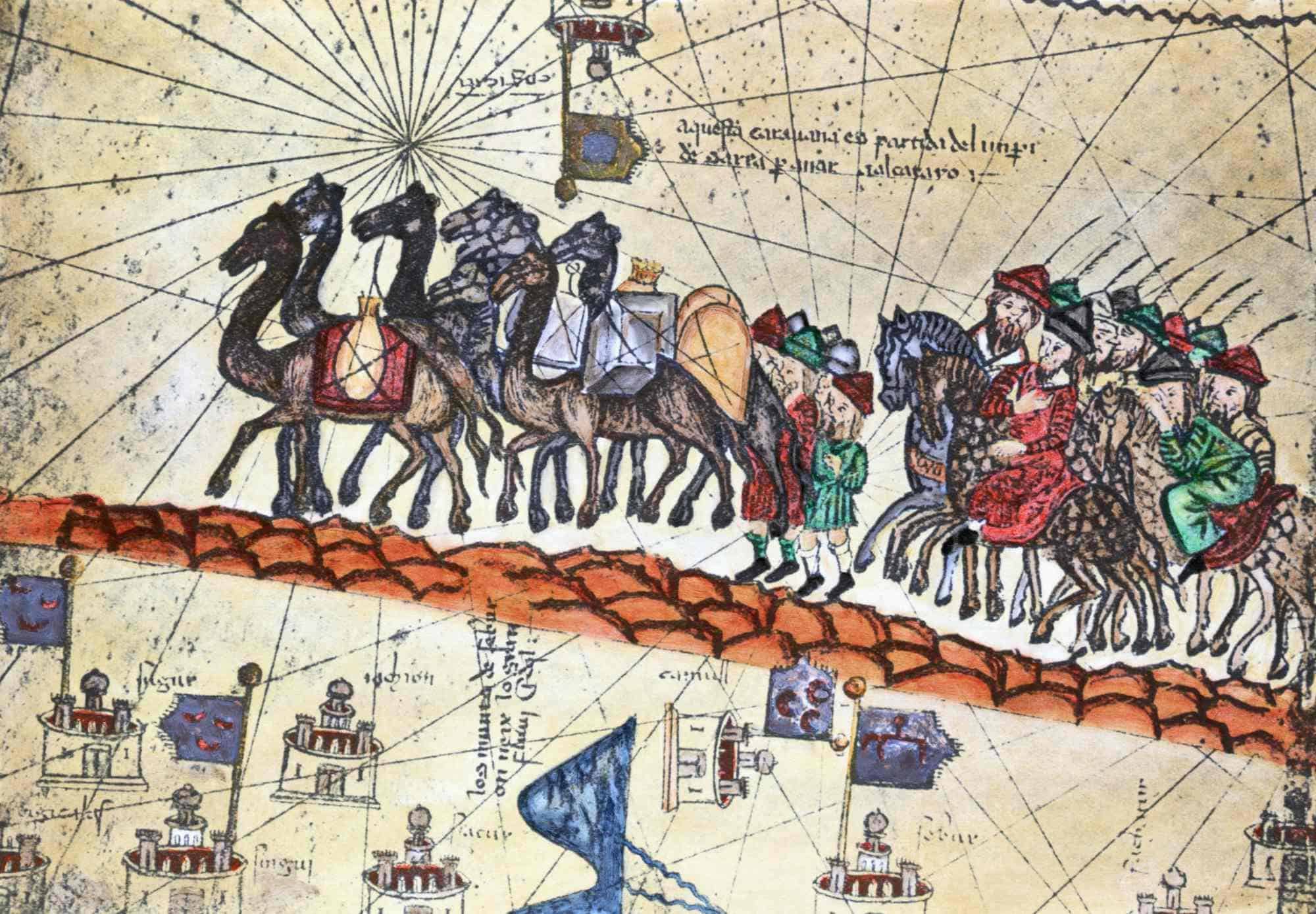This contribution is part of the book “The Dragon at the Gates of Europe: Chinese presence in the Balkans and Central-Eastern Europe” (more info here) and has been selected for open access publication on Blue Europe website for a wider reach. Citation:
Bogoni, Andrea, Foreword, in: Andrea Bogoni and Brian F. G. Fabrègue, eds., The Dragon at the Gates of Europe: Chinese Presence in the Balkans and Central-Eastern Europe, Blue Europe, Dec 2023: pp. 1-8. ISBN: 979-8989739806.
人生南北多歧路,
將相神仙,
也要凡人做。
百代興亡朝復暮,
江風吹倒前朝樹。
功名富貴無憑據,
費盡心情,
總把流光誤。
濁酒三杯沉醉去,
水流花謝知何處。
– 儒林外史
Men in their lives go on different ways;
Generals, statesmen, saints and even immortals
Begin as ordinary people. Dynasties rise and fall,
Mornings change to evenings; winds from the river
Bring down old trees. From a former reign;
And fame, riches, rank may vanish without a trace.
Then aspire not for these, wasting your days;
But drink and be merry, for who knows
Where the waters carry the blossom cast over them?
– The Scholars
In the modern fast-evolving global landscape, where “mornings change to evenings” in the blink of an eye, intricate international relations develop around a multitude of factors: from economic interests and political aspirations to cultural exchanges and strategic partnerships. One of the most compelling narratives unfolding on this global stage is the burgeoning relationship between the People’s Republic of China (PRC) and the countries of Central and Eastern Europe (CEE), particularly in the Western Balkans.
In contemporary capitalism, the Belt and Road Initiative (BRI) has fundamentally altered the geographical landscape. Within a short decade, the BRI has grown into an international initiative that encompasses more than one hundred countries, prompting a surge of research. Numerous scholarly publications in various fields and languages have been published concerning the extensive implications and consequences of the Belt and Road Initiative (Chen, Song, and Yang 2022; Bashir et al. 2021).
It is unsurprising that this debate, both in media and academia, has sparked several differing opinions. The Belt and Road Initiative is deemed by supporters as an inventive approach to promote growth through transnational connectivity enhancement and multilateral collaboration (Benabdallah 2019), it is also narrated as an alternative to the previous dominant method of foreign investment and aid facilitated by the IMF and World Bank (Bond 2020). Others believe that it serves as China’s response to the United States’ domination of the global trade and financial system (Zhao 2021), despite arguments against the feasibility of a new Chinese-led international order (Mendes and Wang 2023).
Nevertheless, critics caution against the economic benefits of significant investments in nations with high sovereign risk and low return on investment, highlighting the considerable indebtedness imposed on host nations by large-scale infrastructure programs and warning against possible debt entanglement (Taylor and Zajontz 2020). Many argue that the Belt and Road Initiative is in fact creating a new form of dependency (Green 2019; Behsudi 2023). A second concern is related to the crucial role played by the state in the Belt and Road Initiative. Private companies and multinational corporations are the primary drivers of free-market globalization, which sharply contrasts with the majority of large-scale cooperative initiatives initiated by governments or state-owned enterprises (Wang and Shen 2021). Private investors frequently view the scale and length of the profit cycles linked to these ventures as unappealing. As a result, this signals a model of state-managed globalisation, where national and interstate organisations have significant influence. Contrary to the prevailing notion that global capitalism’s expansion is solely driven by a company-centric, market-oriented approach, this particular model is dominated by the state. Finally, critics of the BRI have also focused on the environmental impact and the degradation that such infrastructural projects may have (Ascensão et al. 2018). For instance, a 2017 report published by the World Wildlife Fund (WWF) noted that there is a considerable overlap between BRI projects and sensitive environments (World Wildlife Fund 2017).
China’s investments in Central and Eastern Europe have undergone noteworthy expansion and heightened scrutiny subsequent to the introduction of the BRI and the 16+1 model, in 2013 and 2012 correspondingly. Chinese mounting economic sway has provoked anxiety among European Union institutions regarding its political repercussions. In 2018, European Commissioner for Neighbourhood and Enlargement Johannes Hahn asserted that the EU ought to be more alarmed by China than Russia, with particular regard to the “Continent’s southeastern flank” (Heath and Gray 2018). This is due to the possibility of China placing “Trojan horses” through its financial leverage to impose political pressure on countries that pursue EU membership (Karnitschnig 2017). The perception of Chinese “Trojan horses” has amplified due to certain EU countries’ conduct, such as Greece and Hungary, who have frequently backed China, thus supplying it with an indirect approach to weaken EU unity (Salát 2020; Stroikos 2023). An apparent inference is that China could be implementing a “divide et impera” tactic: through elevating its trade and investment in CEE, Beijing could potentially “inexpensively purchase” their political backing, impede EU policies that are not in its favour, and generate disharmony within the Union (Zeng 2023).
Blue Europe’s “The Dragon at the Gates of Europe: Chinese Presence in the Western Balkans and Central-Eastern Europe” is an exploration of this delicate interplay. Edited by Blue Europe think tank, this book is a testament to the collective effort of numerous scholars, diplomats, and experts who have dedicated themselves to unravelling the multifaceted tapestry of the Sino-CEE relationship. The Central and Eastern European region, comprising countries such as Hungary, Poland, the Czech Republic, and the Western Balkan states, has emerged as a key player in China’s grand strategy.
This book endeavours to provide readers with a comprehensive overview of recent developments and sheds light on the driving forces behind this complex intercontinental collaboration. It unveils into five main Parts, from the “head” of the dragon to its “tail”: the first is called “The Dragon amidst a global turbulence: Sino-CEE relations and the international scenario” and explores the impact of broader international dynamics on Sino-CEE relations. Parts II to IV make up the “body” of the dragon and orderly analyse Chinese influence “from West to East”: the Western Balkans, Central Europe and Eastern Europe. Finally, Part V – “Cultural perception and differences between Central-Eastern Europe and China” offers new cultural perspectives and professional insights.
Our goal is to serve as a bridge between policymakers, academics, and the general public, offering insights into the profound implications of the Sino-CEE partnership. We aim to address the key issues that have arisen in recent times; to cite a few examples: in Part I Marceli Hazla wrote about the possibility for Three Seas Initiative countries to maintain diplomatic relations with Taiwan; in Part II Sonja Stojadinovic analysed the political and financial conditions for infrastructural investments, both of China and EU, in the Western Balkans, whereas Slobodan Trivić talked about the “delicate balance” between Serbia and China in light of the BRI; in Part III Samuel Dempsey focused on the effects of Sino-Hungarian relations on the EU and NATO; in Part IV Aliaksei Patonia investigated Belarus’ role in the Chinese strategy and Ivoslav Ganchev analysed political and economic relations between Bulgaria and China; in Part V Jakub Stepaniuk investigated the perception of Chinese presence in Polish and Serbian Media.
Throughout the pages of this book, readers will find a wealth of expertise from the field. From discussions on the changing political dynamics in CEE countries and their respective foreign policies to in-depth analyses of specific BRI projects in the Western Balkans, our contributors provide valuable perspectives on the multifaceted relationship between China and this vital European region.
The Dragon at the Gates of Europe is more than just a reflection of the past; it is an exploration of the future. As we navigate the intricate web of Sino-CEE relations, we must acknowledge both the promises and challenges that lie ahead. With this knowledge, we can make informed decisions about the future of our interconnected world.
We invite you to embark on this journey through the evolving landscape of Chinese presence in the Western Balkans and Central-Eastern Europe. Let this book be a guide to understanding the intricate dance of the dragon at the gates of Europe, a “dance” that will undoubtedly shape the course of international relations in the years to come.
Bibliography
Ascensão, Fernando, Lenore Fahrig, Anthony P. Clevenger, Richard T. Corlett, Jochen A. G. Jaeger, William F. Laurance, and Henrique M. Pereira. 2018. ‘Environmental Challenges for the Belt and Road Initiative’. Nature Sustainability 1 (5): 206–9. https://doi.org/10.1038/s41893-018-0059-3.
Bashir, Muhammad Farhan, Benjiang MA, Yifang Qin, and Muhammad Adnan Bashir. 2021. ‘Evaluation of One Belt One Road Publications: A Bibliometric and Literature Review Analysis’. Environmental Science and Pollution Research 28 (28): 37016–30. https://doi.org/10.1007/s11356-021-14621-y.
Behsudi, Adam. 2023. ‘The “Rift Is There”: China vs. the World on Global Debt’. POLITICO, 11 April 2023. https://www.politico.com/news/2023/04/11/china-lending-imf-world-bank-00090588.
Benabdallah, Lina. 2019. ‘Contesting the International Order by Integrating It: The Case of China’s Belt and Road Initiative’. Third World Quarterly 40 (1): 92–108. https://doi.org/10.1080/01436597.2018.1529539.
Bond, Patrick. 2020. ‘BRICS Banking and the Demise of Alternatives to the IMF and World Bank’. In International Development Assistance and the BRICS, edited by Jose A. Puppim de Oliveira and Yijia Jing, 189–218. Governing China in the 21st Century. Singapore: Springer. https://doi.org/10.1007/978-981-32-9644-2_8.
Chen, Dongxu, Dongping Song, and Zhongzhen Yang. 2022. ‘A Review of the Literature on the Belt and Road Initiative with Factors Influencing the Transport and Logistics’. Maritime Policy & Management 49 (4): 540–57. https://doi.org/10.1080/03088839.2021.1889063.
Green, Mark. 2019. ‘China’s Debt Diplomacy’. Foreign Policy, 25 April 2019. https://foreignpolicy.com/2019/04/25/chinas-debt-diplomacy/.
Heath, Ryan, and Andrew Gray. 2018. ‘Beware Chinese Trojan Horses in the Balkans, EU Warns’. POLITICO, 27 July 2018. https://www.politico.eu/article/johannes-hahn-beware-chinese-trojan-horses-in-the-balkans-eu-warns-enlargement-politico-podcast/.
Karnitschnig, Matthew. 2017. ‘Beijing’s Balkan Backdoor’. POLITICO, 13 July 2017. https://www.politico.eu/article/china-serbia-montenegro-europe-investment-trade-beijing-balkan-backdoor/.
Mendes, Carmen Amado, and Xuheng Wang. 2023. ‘The Belt and Road Initiative in Global Governance: Impact on the International World Order’. In The Palgrave Handbook of Globalization with Chinese Characteristics: The Case of the Belt and Road Initiative, edited by Paulo Afonso B. Duarte, Francisco José B. S. Leandro, and Enrique Martínez Galán, 109–23. Singapore: Springer Nature. https://doi.org/10.1007/978-981-19-6700-9_7.
Salát, Gergely. 2020. ‘An Authoritarian Advance or Creating Room for Manoeuvre? The Case of Hungary’s China Policy’. Stosunki Międzynarodowe 56 (2): 125–43.
Stroikos, Dimitrios. 2023. ‘“Head of the Dragon” or “Trojan Horse”?: Reassessing China–Greece Relations’. Journal of Contemporary China 32 (142): 602–19. https://doi.org/10.1080/10670564.2022.2067743.
Taylor, Ian, and Tim Zajontz. 2020. ‘In a Fix: Africa’s Place in the Belt and Road Initiative and the Reproduction of Dependency’. South African Journal of International Affairs 27 (3): 277–95. https://doi.org/10.1080/10220461.2020.1830165.
Wang, Suyun, and Guilong Shen. 2021. ‘The Belt and Road Initiative and Globalization’. In A New Blue Ocean: Prospects for Latin American SMEs in the Belt and Road Initiative, edited by Yihai Li and Aníbal Carlos Zottele, 1–16. Singapore: Springer. https://doi.org/10.1007/978-981-15-7687-4_1.
World Wildlife Fund. 2017. ‘Greening the Belt and Road Initiative’. WWF. https://www.wwf.org.uk/sites/default/files/2018-04/greening-the-belt-and-road-initiative.pdf.
Zeng, Yuleng. 2023. ‘Riding the Trojan Horse? EU Accession and Chinese Investment in CEE Countries’. Journal of Contemporary China 0 (0): 1–16. https://doi.org/10.1080/10670564.2023.2196507.
Zhao, Minghao. 2021. ‘The Belt and Road Initiative and China–US Strategic Competition’. China International Strategy Review 3 (2): 248–60. https://doi.org/10.1007/s42533-021-00087-7.





